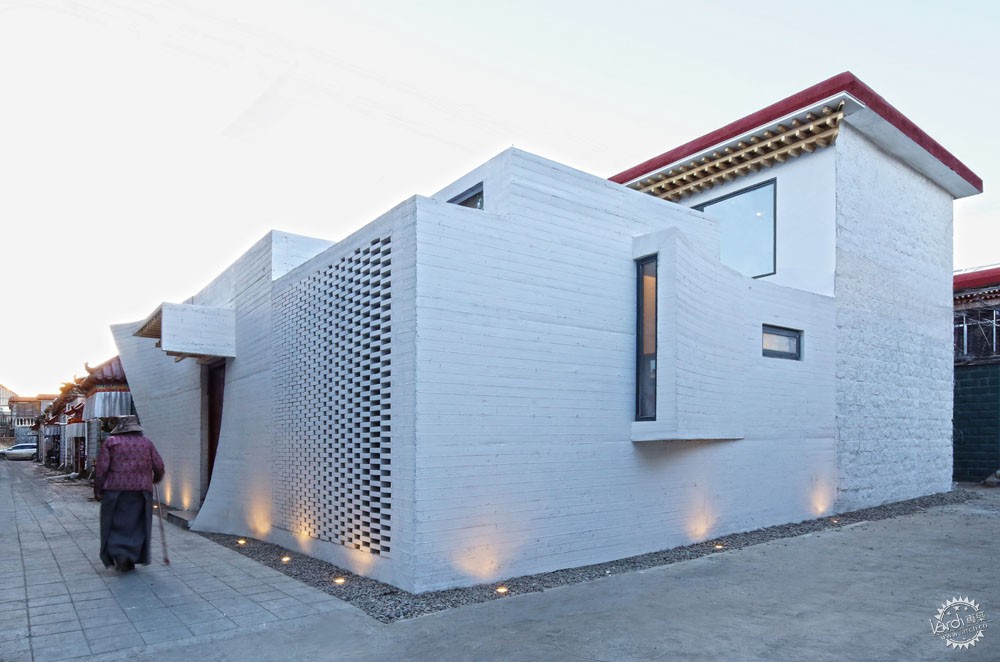
Renovation of Tibetan Dwelling / hyperSity architects
由专筑网飞鱼,王雪纯编译
本文由建筑师事务所提供。拉萨是著名的阳光城市,阳光是家庭日常生活中非常重要的一个元素。但是日光仍需要有限制地使用。建筑设计就旨在控制并设计光源。传统的西藏人的生活空间对光的控制体现在对夏日房与冬日房上。冬日房的窗户低矮窄小,有利于保温。夏日房的窗户为宽阔的高窗,有利于通风。因此传统的西藏庭院通常是封闭的空间,创造出一种紧密的,严肃的,庄重的氛围。西藏人的日常生活和信仰形成了庭院建筑,使得建筑通常由厚重的墙体和纯色组成。不幸的是,在极端的现代化进程中,这样的建筑却与西藏的年轻人的需求相冲突。
Text description provided by the architects. Lhasa is known as the city of sunshine, which very important element in the living behavior of a family. But light doesn't mean unlimited one. It points to the controlled light and designed light. In traditional Tibetan living space, the control of light is reflected in the vernacular Tibetan living between "winter room" that the lower window is small, which is good for keeping warm, and "summer room" that the upper window is large, which is good for ventilation. So the traditional Tibetan courtyard is often an introverted space, and creates an intimate, solemn and dignified atmosphere. Tibetan People's daily life and faith were formed in courtyard houses, where are traditionally surrounded by thick walls and pure colors. Unfortunately, undergoing a drastic modernization process nowadays, they are conflicted with the needs of young Tibetan generations.
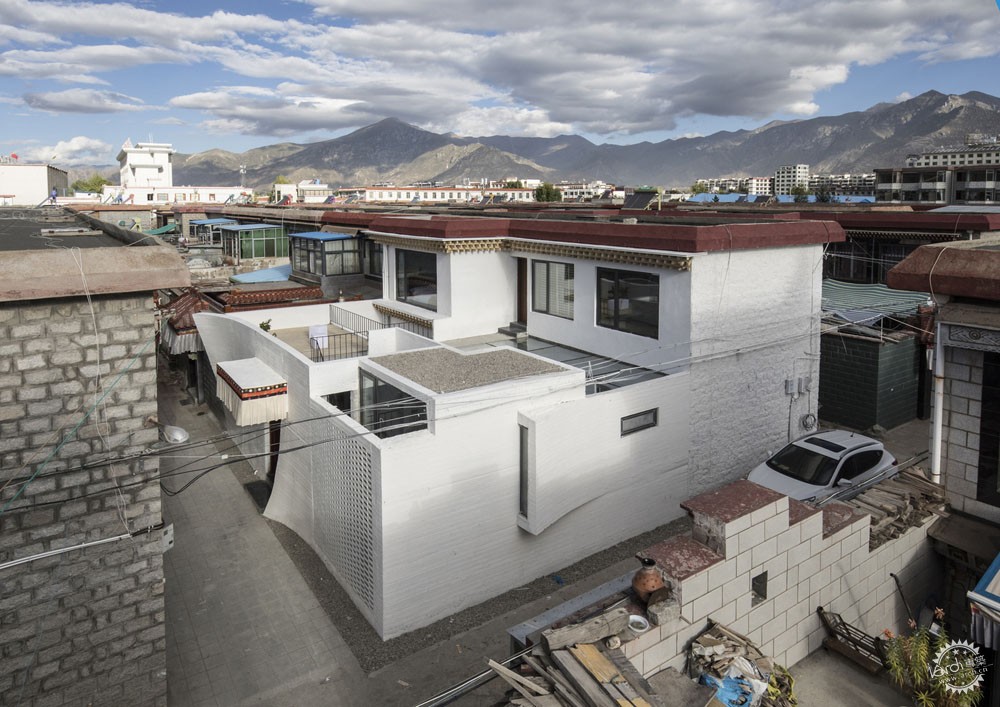
1990年由政府出资建造两层庭院的房子属于城关区东部的落桑家族的产业。落桑和他的妻子曾在内地城市学习,当他们回到拉萨时,原始的建筑布局已经不能满足家庭的需要,落桑的第一个女儿渐渐长大,而他们又迎来了第二个新生女儿的出生。另外,每年的佛教节日期间,落桑的家庭就像拉萨的其他家庭一样,会邀请他们的亲戚与朋友。然而,他们并没有足够的空间来接待客人。因此建筑的改造应该要满足现代生活的功能需求,同时要充分考虑传统的精神生活。现代生活空间的设计结合传统空间特色,这是建筑改造方式的出发点。
Built by the government in the 1990s, the 2-floor courtyard house is the commodity property of Luosang family in the eastern part of Chengguan District. Luosang and his wife were educated in university of mainland China, after they came back to Lhasa, the original layout could not fulfill the family population growth as Luosang's eldest daughter and youngest daughter were born one after another in recent years. In addition, during the Buddha festivals every year, the Luosang family, like other families in Lhasa, would welcome their relatives and friends who come from all over the Tibetan region. Nevertheless, there is not sufficient space reserved for that. So the family conforms to the functional requirements of modern life and also gives consideration to the traditional spiritual life. The creation of the modernized living space with traditional spatial characteristics, become the starting point of the architectural renovation approach.
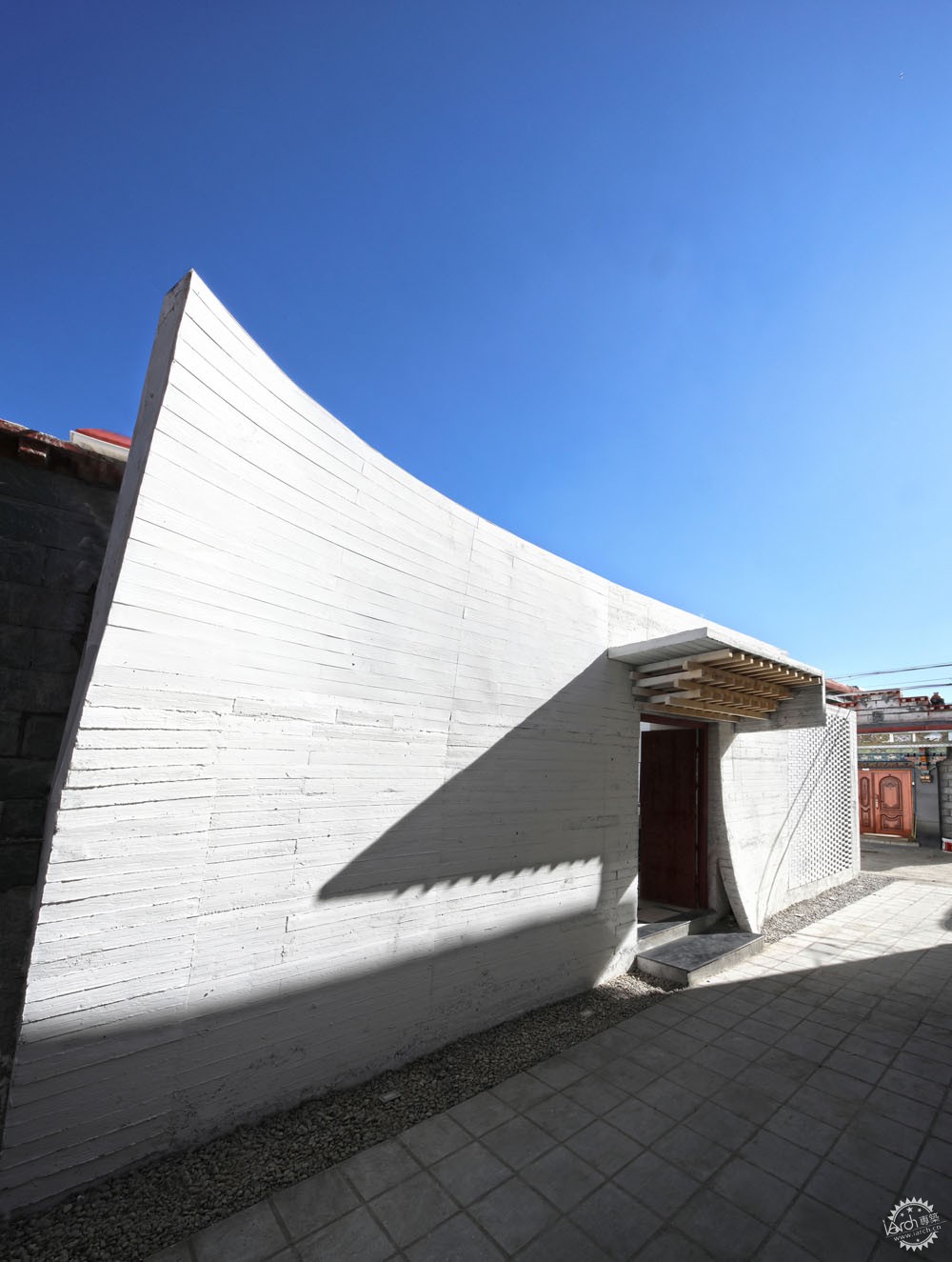

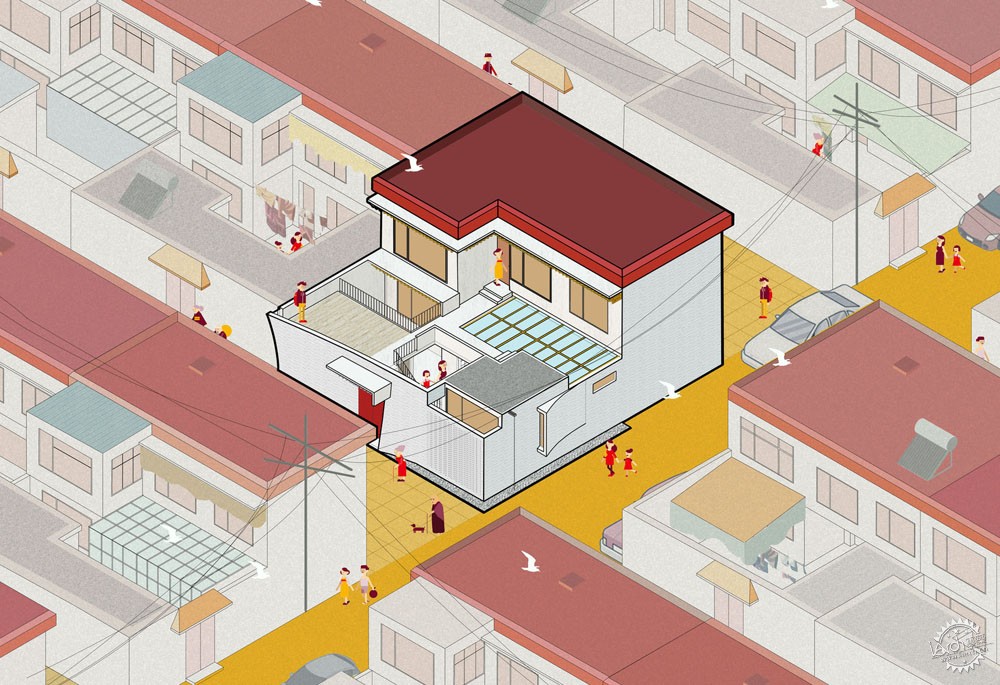
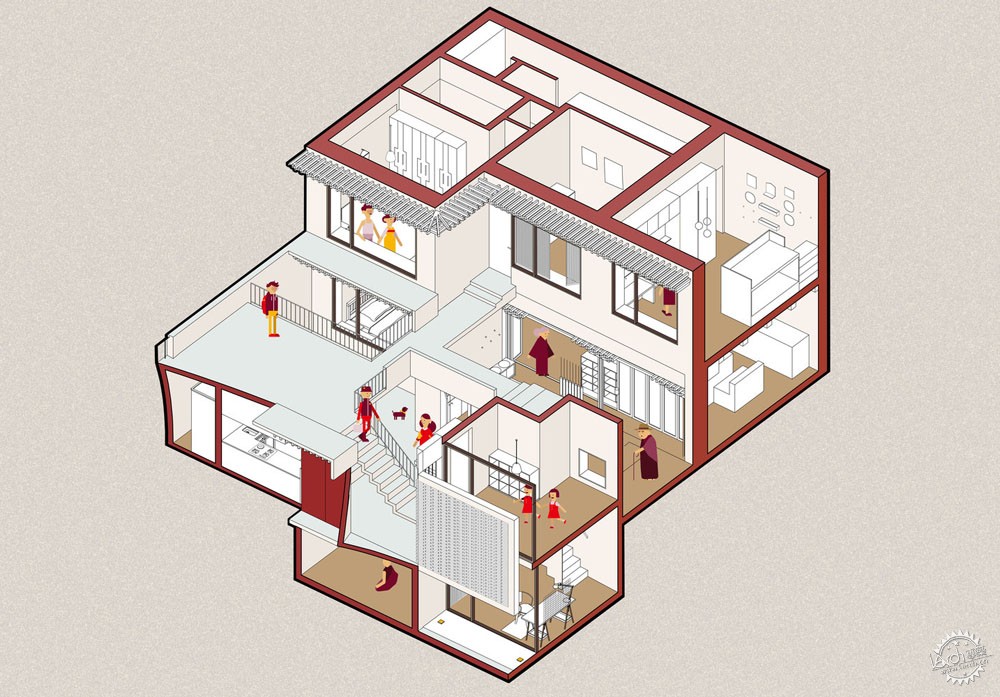
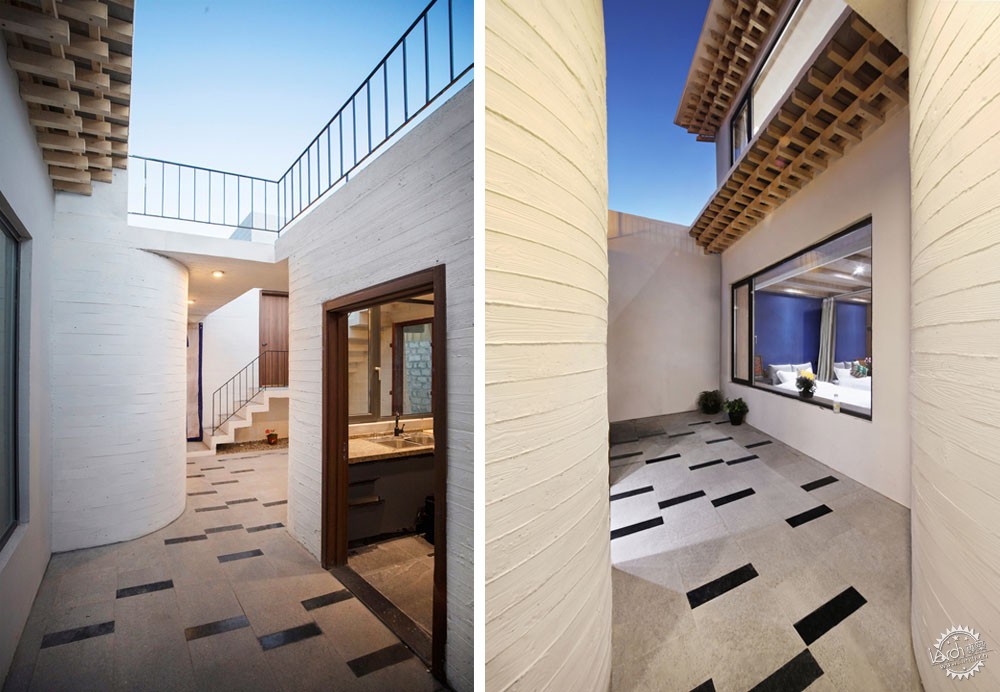
因此,维持庭院生活空间的隐私性为前提,新设计的建筑仍然保持外墙的坚固界面。改造的地方是厨房面向庭院的一扇能获得足够的阳光的大面积窗来。浴室位于庭院的中部,西侧开三角形窗,保证私密性同时满足采光。在其他空间,灯元素有意识的进行控制,例如儿童活动室与南侧的地下工作室,二层中增大每一扇窗户以增加采光,与传统的“夏日房”的原则相互符合。
Therefore, in the new design, on the premise of maintaining the privacy of courtyard life, the house is yet still keeping the solid interface of the external wall. The strategy is that the kitchen opens a large window facing internal courtyard to let in as much sunlight as possible. The bathroom in the middle of the courtyard, with triangular windows in the west side, ensures privacy while introducing daylighting. In other spaces, the elements of light are also consciously controlled, such as the children's activity room and underground studio on the south side. The second floor increases the lighting area of each area window, in line with the traditional "summer room" rule.
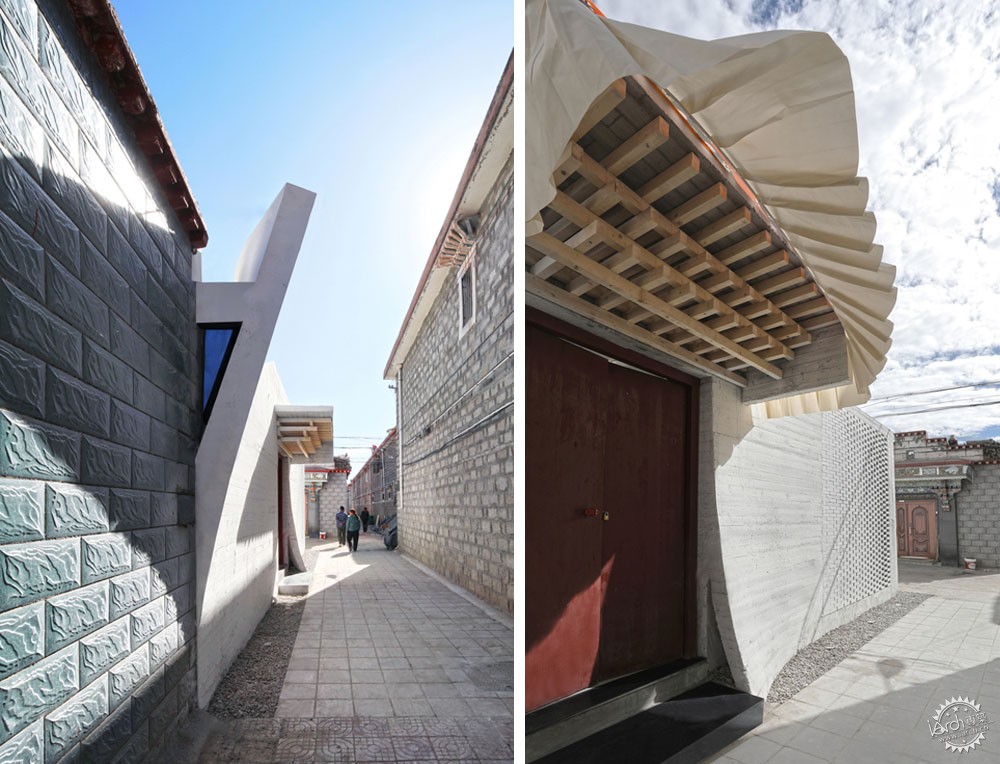
建筑设计事务所在原建筑的基础上,拆除了一楼的外墙,将阳光房与起居室联系到一起,允许获得最大的采光以及增加“冬日房”与“夏日房”的使用面积。因此阳光房成了当今西藏的居住庭院的核心必备空间。
With the permission of the original structure of the house, the façade wall of the first floor was demolished to connect the sunlight room to the living room, allowing maximum light and usable area for the activities of "winter room" and "summer room”. So the sunshine room becomes "secular" space in the core of the current Tibetan residential courtyard.

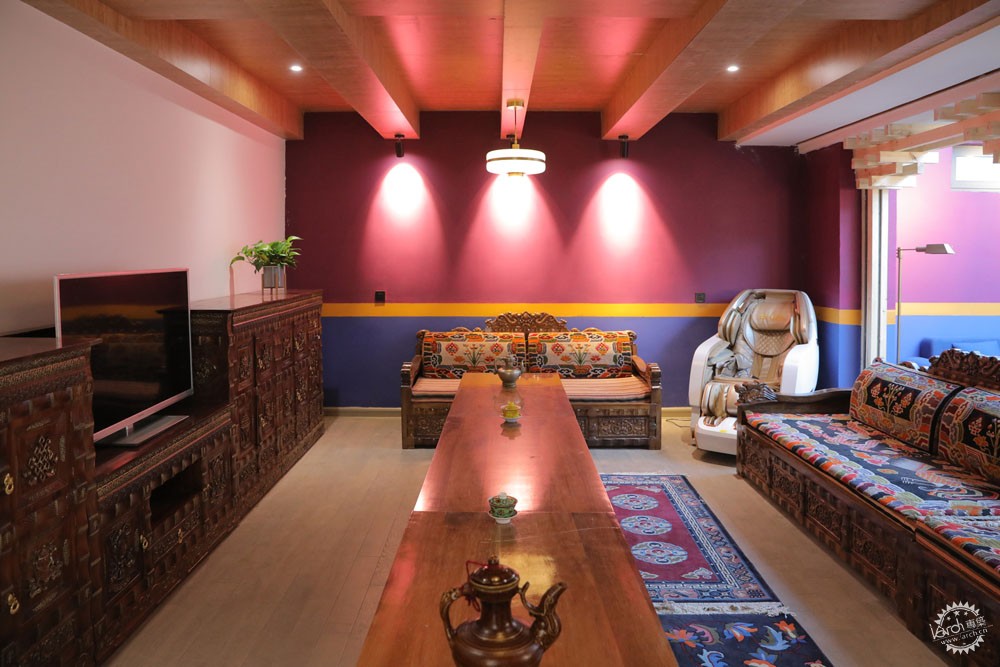
另外,建筑师发现,改造民居时,当地居民对于外墙使用的材料极其关注。他们通常使用自然建筑材料,例如拉萨的石头。在建筑重建的一部分中,建筑师使用混凝土的技术与整个联接起来。以前的混凝土形式的外墙使用木板来创造木质感以此强调自然。
In addition, the architects observed that local people pay special attention to the use of external wall materials when renovating contemporary dwellings. They normally use natural building materials such as Lhasa stone. In the reconstruction part of the building, the architect used the technology of concrete casting as a whole. The one-time shaped concrete outer wall uses the timber board to create the texture of wood that emphases the sense of nature.
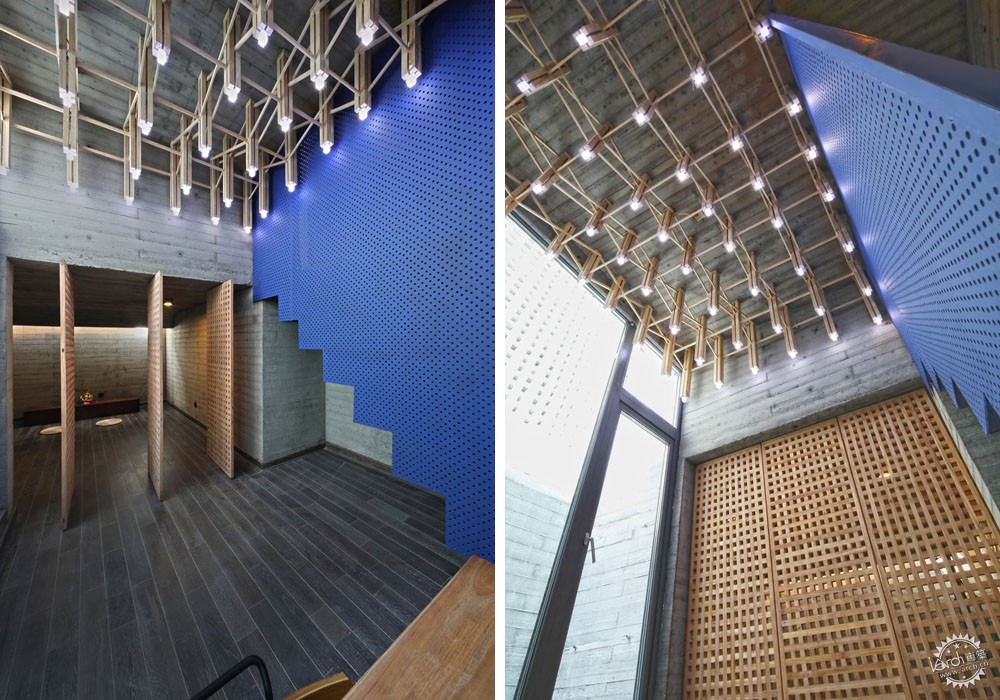

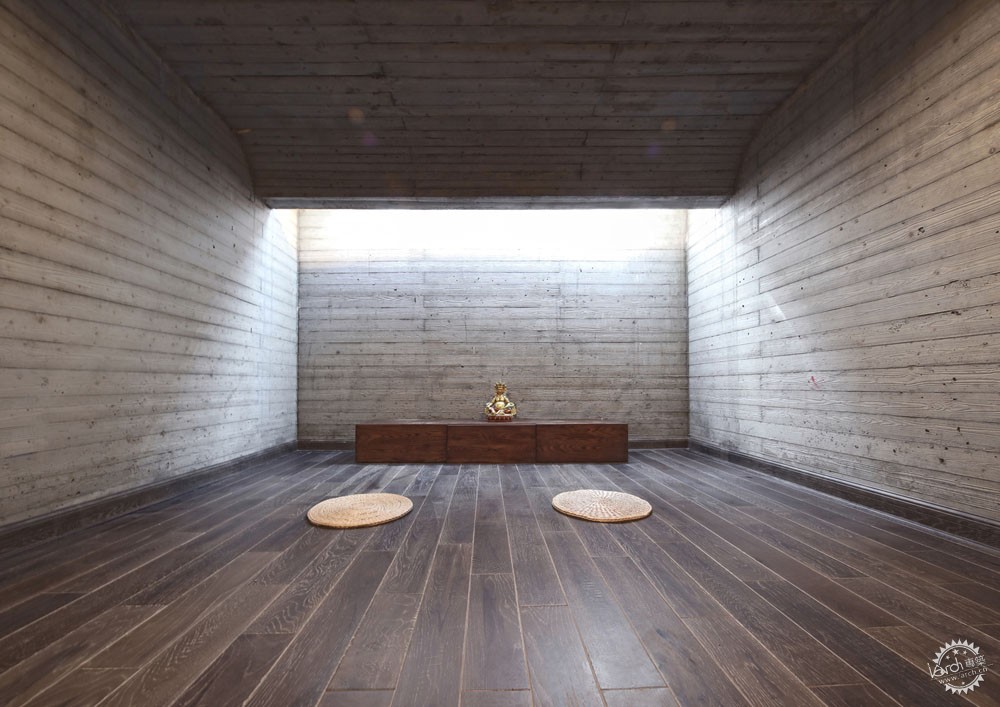
禅房是藏传佛教徒日常修行的地点,其需要不同的灯光。建筑师设计了两个冥想室。有着木质网格状的窗形灯的禅房位于二楼。地下的禅房通过对自然光的控制创造了一种严肃和安静的氛围。地下室的禅房入口由木结构以及点光源提供照明组成。与外面庭院的天光相似,当到达一层通过蓝色的楼梯到达地下层时,人们并没有压抑的感觉。一个可移动的木质网格门将地下室分为两个空间,增强了入口空间的仪式感。二层禅房的天花板由传统民族节的结构组成,暗示无尽的好运。
Buddhist hall, where Tibetan Buddhism daily practice, needs different light. The architects designed two meditation halls. The wooden latticed Windows shapes the light of the Buddhism hall located on the second floor. While the control of the sky light creates a sacred and quiet atmosphere for the underground Buddhist hall. The entrance of the temple in the basement is illuminated by wooden structure and dot light, which echoes the skylight brought by the outdoor courtyard and reduces the depressive feeling when reaching the basement through the blue stairs from the first floor. A movable wooden screen door divides the basement in two space, adding a sense of ritual to the entrance. The ceiling of second floor Buddhist hall is formed by the structure of traditional national knot symbol implied endless auspicious.
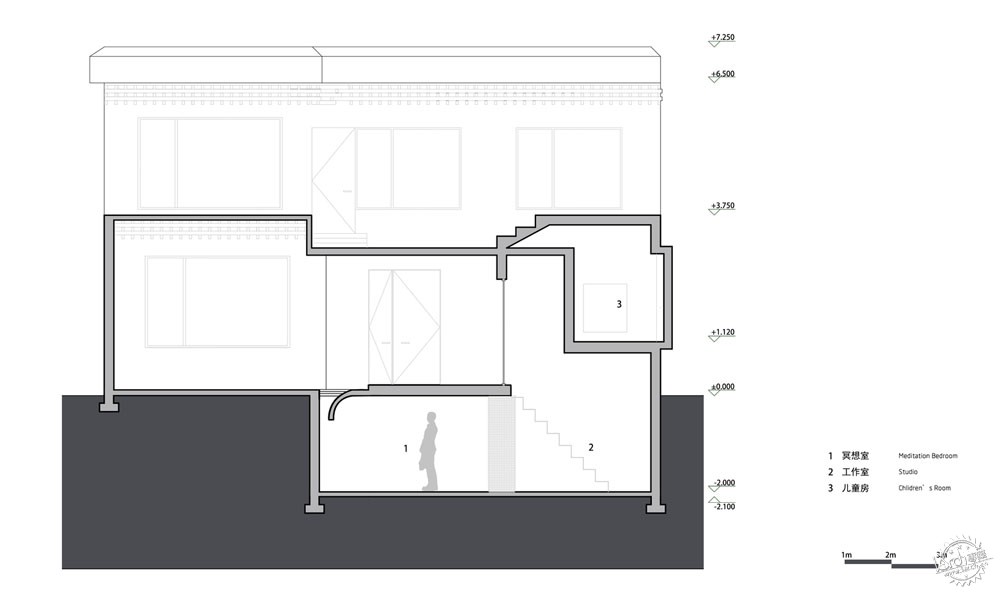
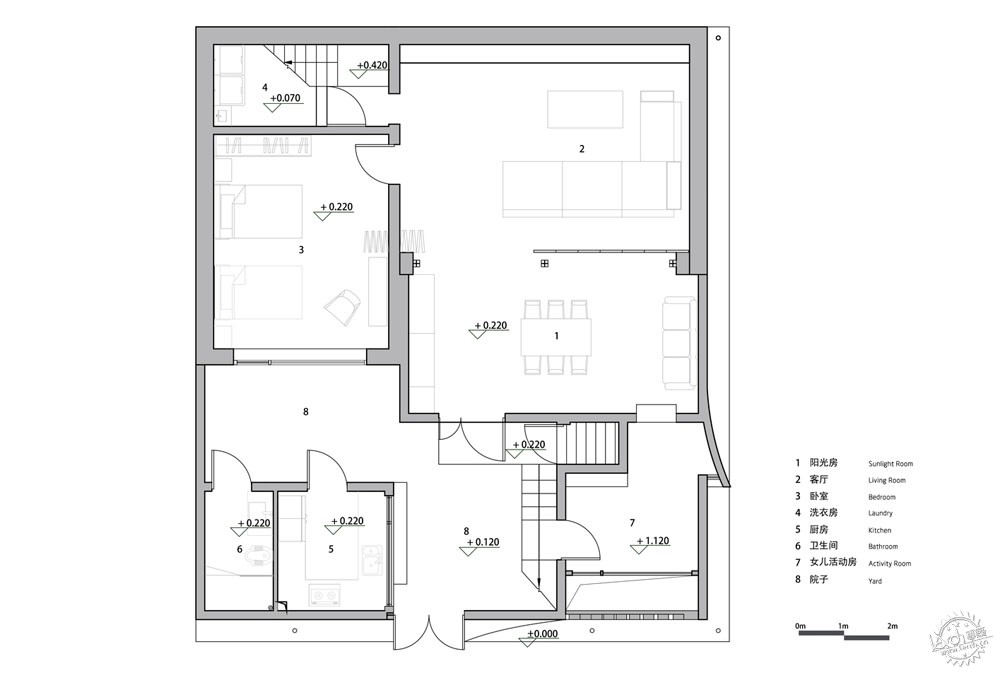
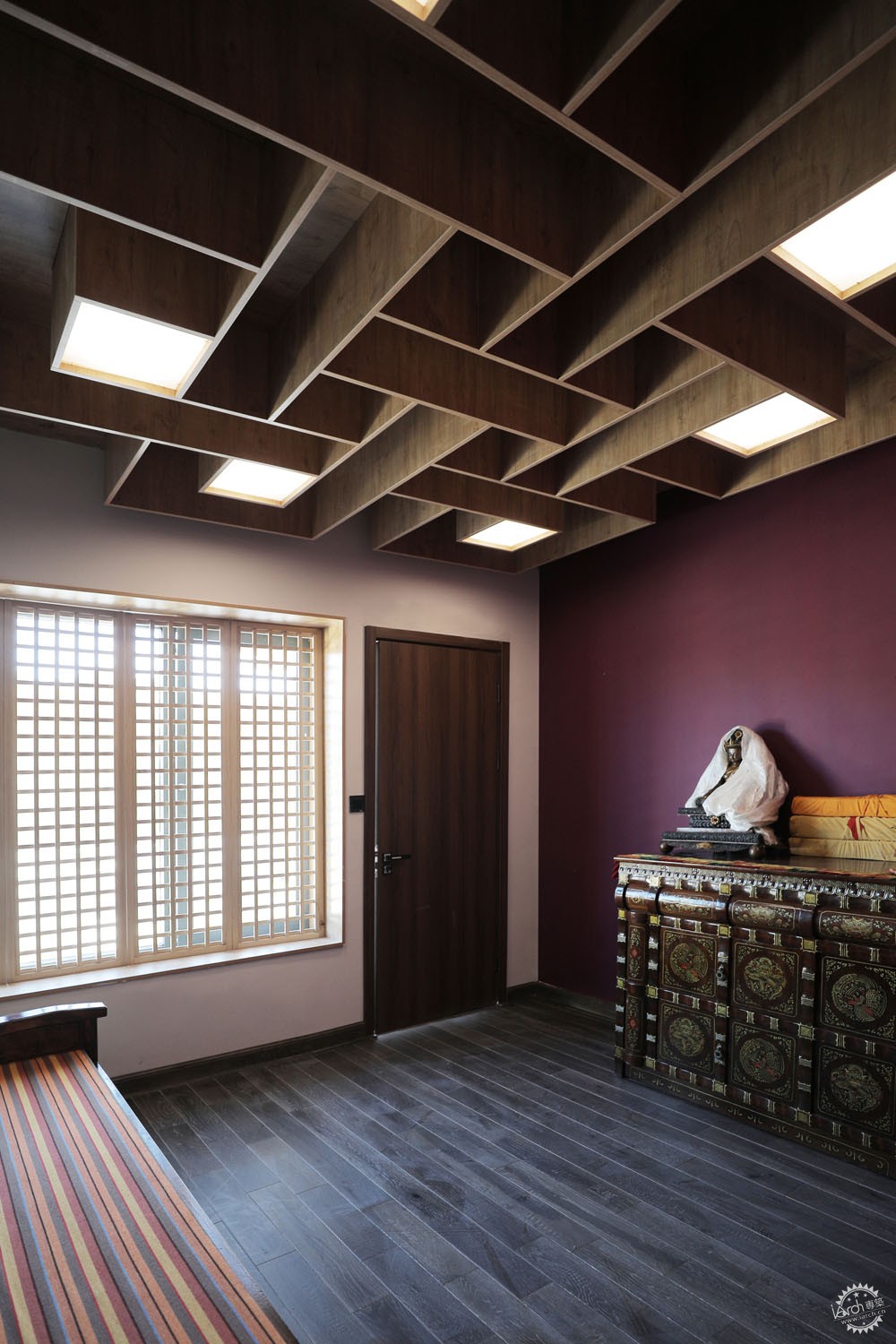
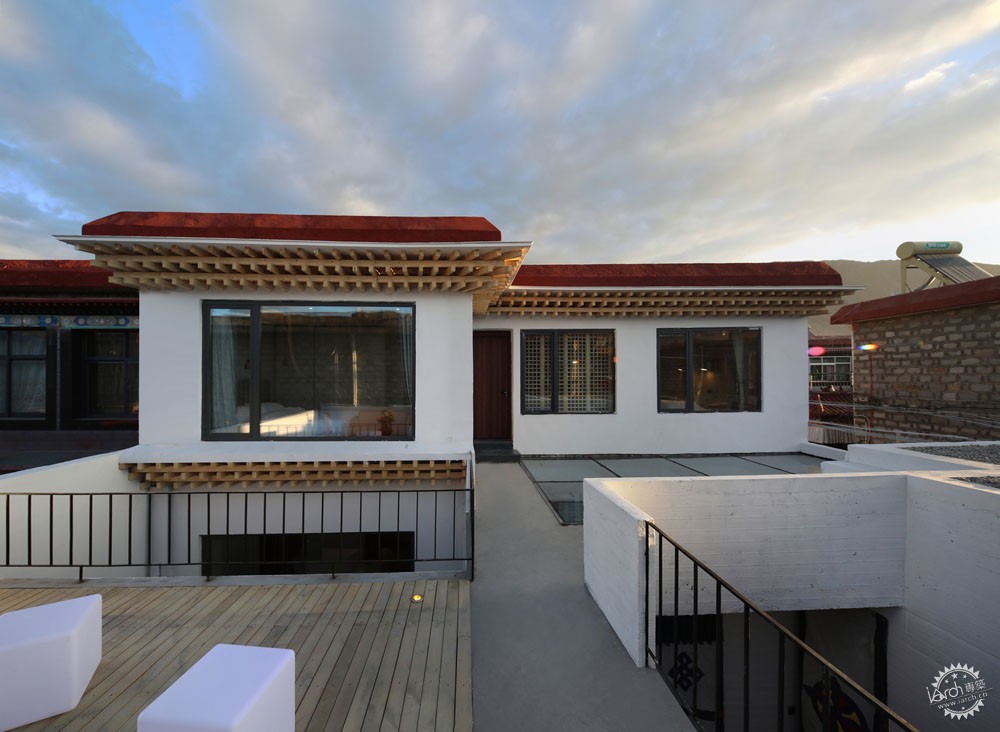
西藏注重整洁并强调室内外的不同,因此,一楼空间为祖父母的起居室,卫生间设置在庭院外墙附近。为年轻人设计的室内卫生间位于二楼。新的厨房与卫生间屋顶平台将成为主要的室外活动空间。礼佛客人通过过庭院楼梯进入二层禅房,并通过室内的楼梯与阳光房相联系。女儿们可以通过阳光房的台阶到达活动室,也可以通过室外楼梯到达屋顶平台。
The Tibetan concept of cleanliness emphasizes "difference between inside and outside". Therefore, in the space of the first floor where the grandparents live, the toilet is set near the outer wall of the courtyard. The indoor toilet is added in the second floor area for younger generations. The roof terrace of the new kitchen and toilet will become the main outdoor activity space. The worshipper guests enter the second-floor buddhist hall through the courtyard staircase, and are connected to the sunlight room through the internal staircase. Daughters can also enter the activity room through the ladder of the sunshine room, and go up to the roof platform through the outdoor stairs.
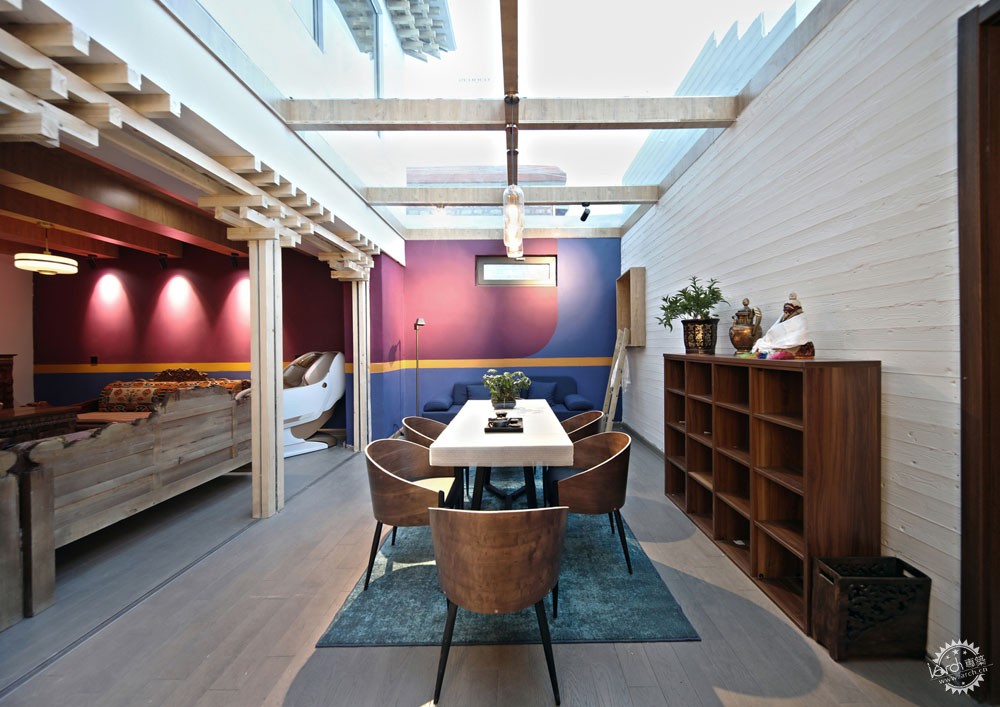

新的起居空间能够满足现代西藏家庭日常生活的所有需求,例如他们的宗教信仰等活动。改造后的社区有着合理的功能布置,满足了通风和采光。满足了其建设家庭精神的需要,成为了整个社区中的示范。“精神”比藏族传统“装饰”更重要。所以项目最终没有采用太多的西藏图腾纹饰,项目在坚持延续传统自然空间的前提下,赋予其新的生命。
The new living space is bound to meet all the specific needs of modern Tibetan families for daily life, religious belief, etc., and more rational arrangement of the function, ventilation, lighting, and other facilities, that reach the spiritual demands of the family and the demonstration value of the whole courtyard in the community. They are considered more important than the decorations of Tibetan cultural symbols. Eventually without using much Tibetan pattern language, the work insists in the continuation of the traditional nature of the space under the premise a new life.

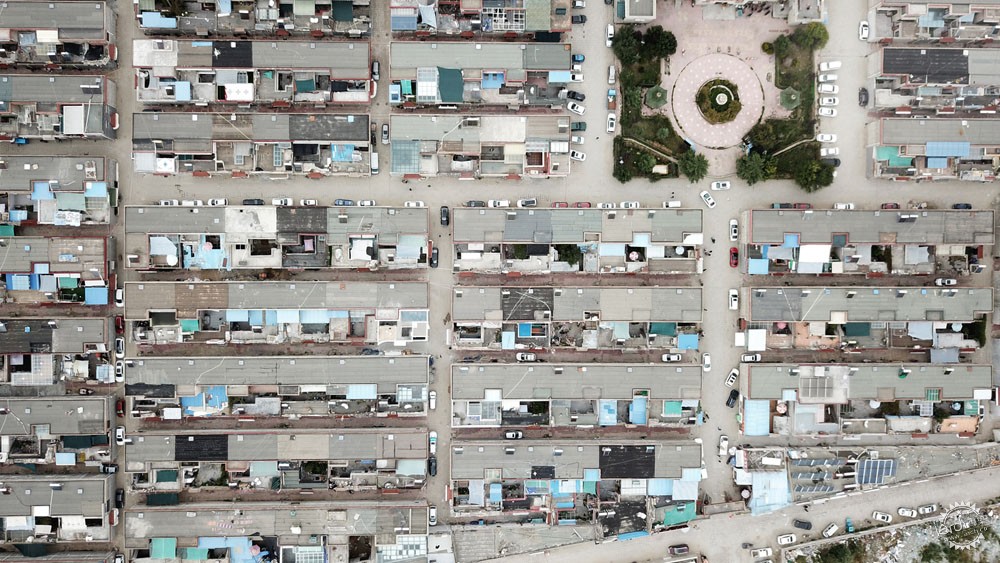
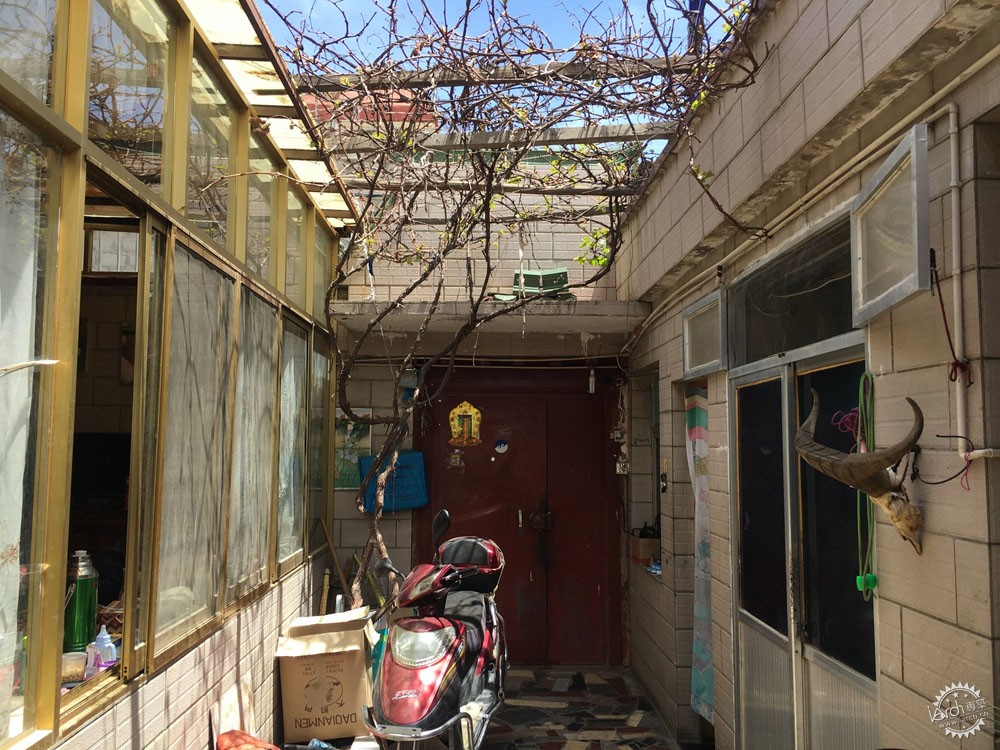

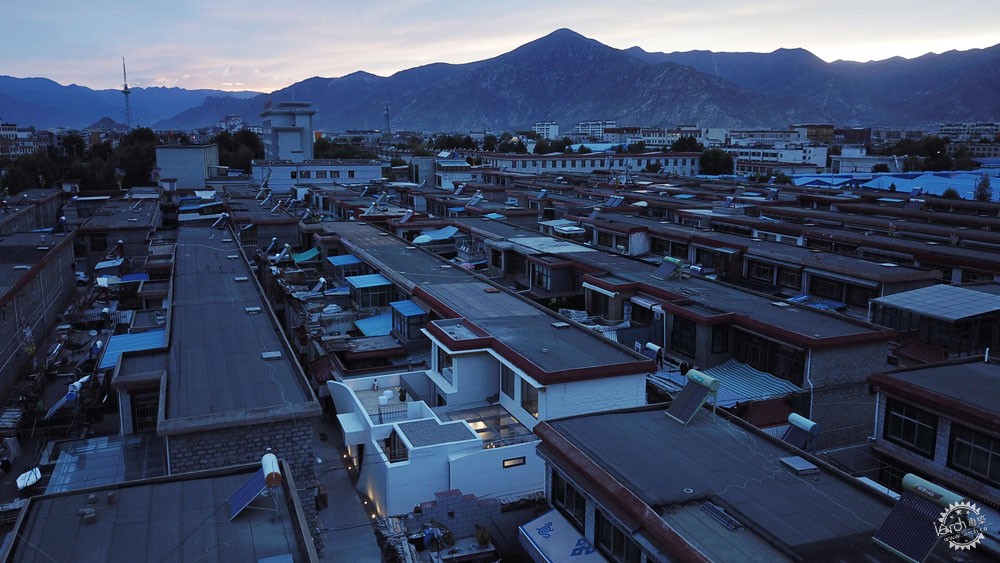

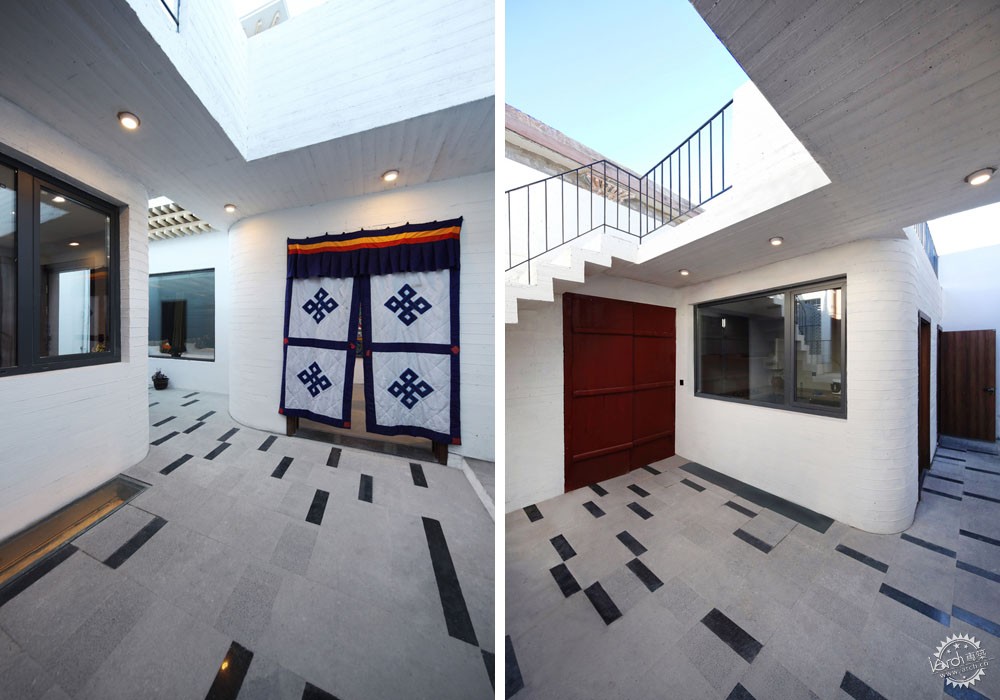
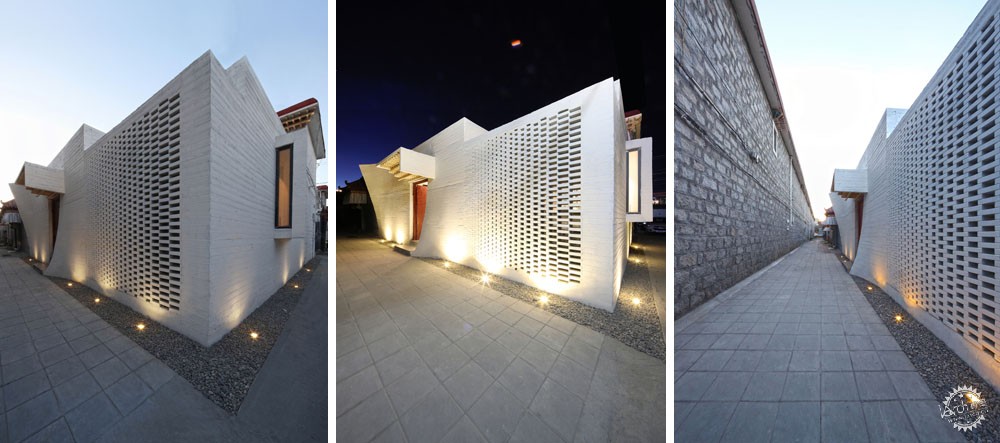
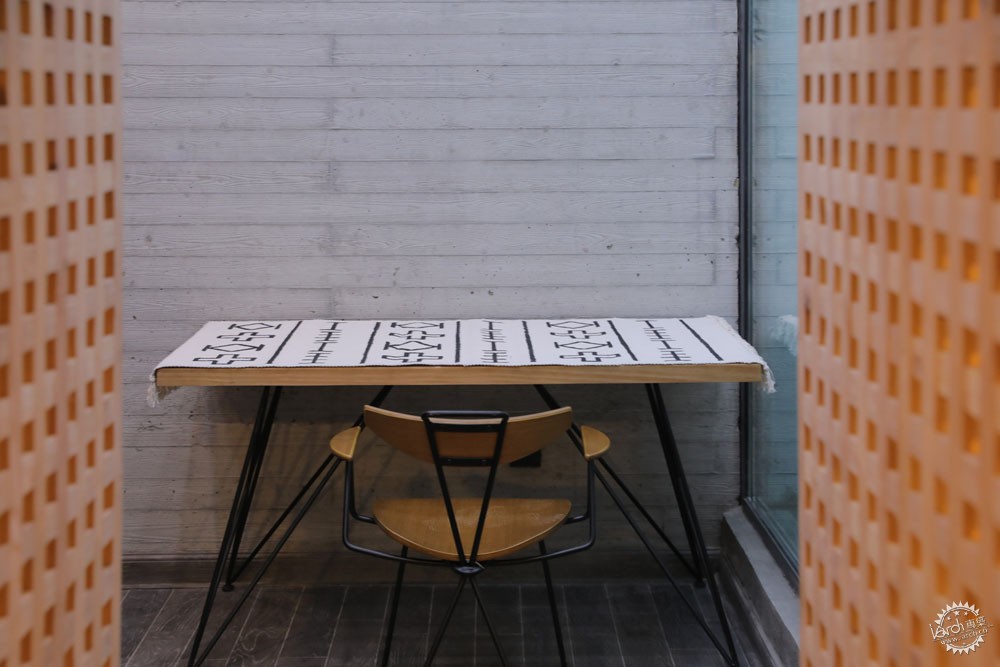
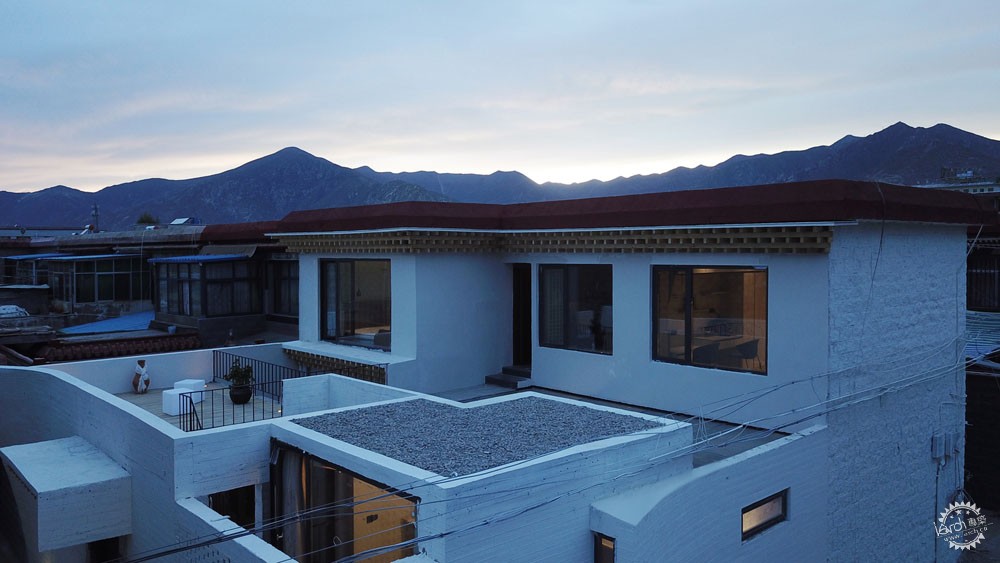
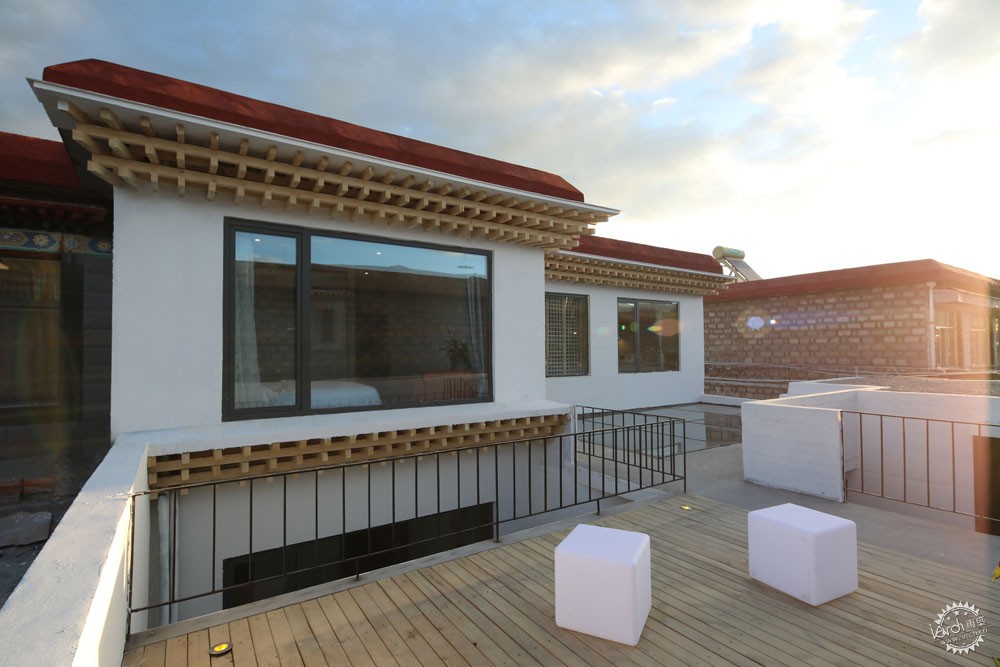
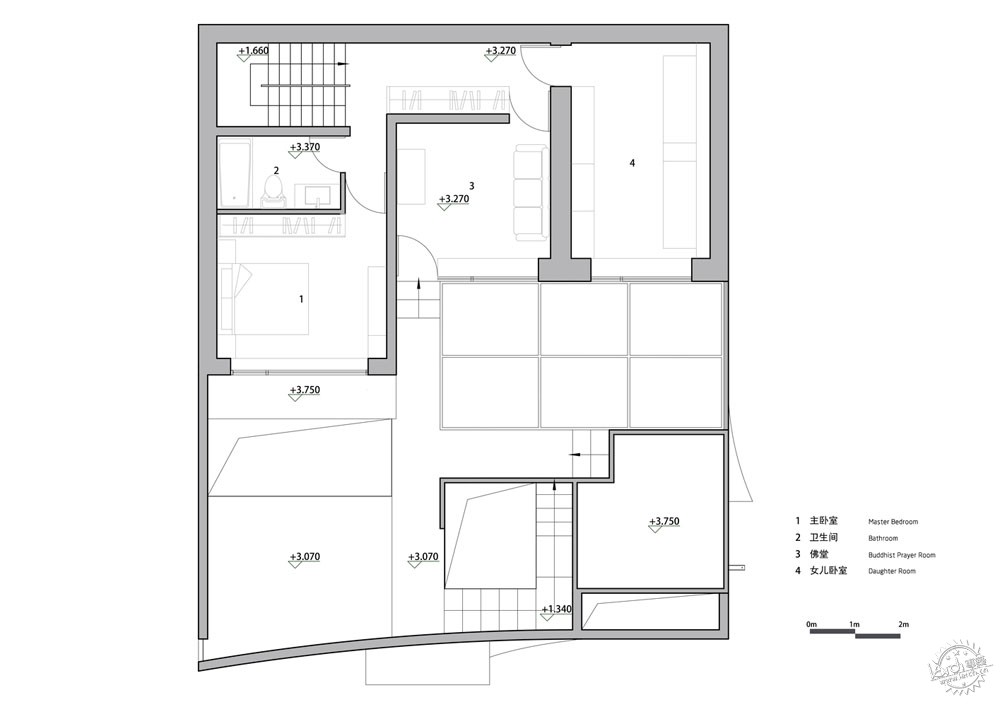
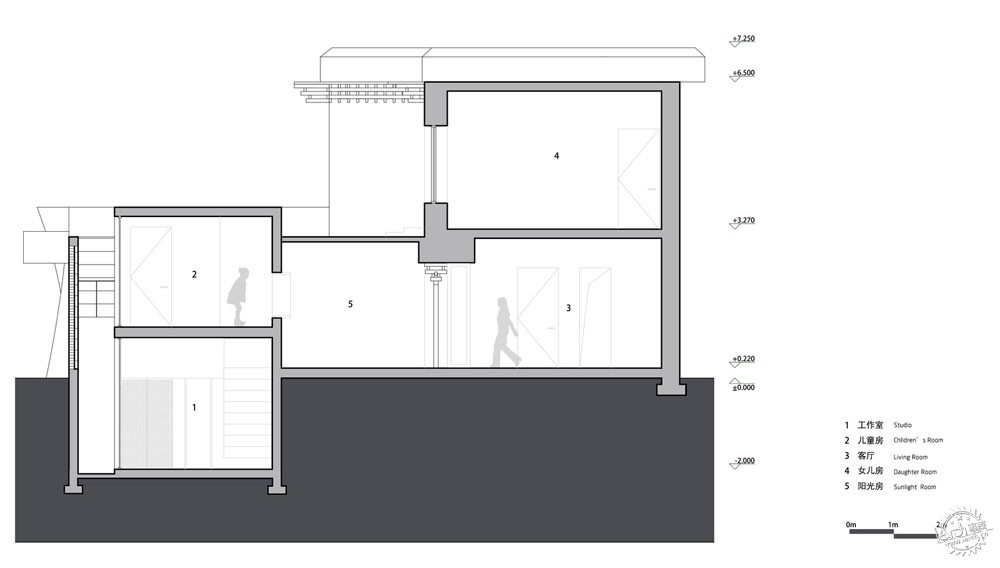
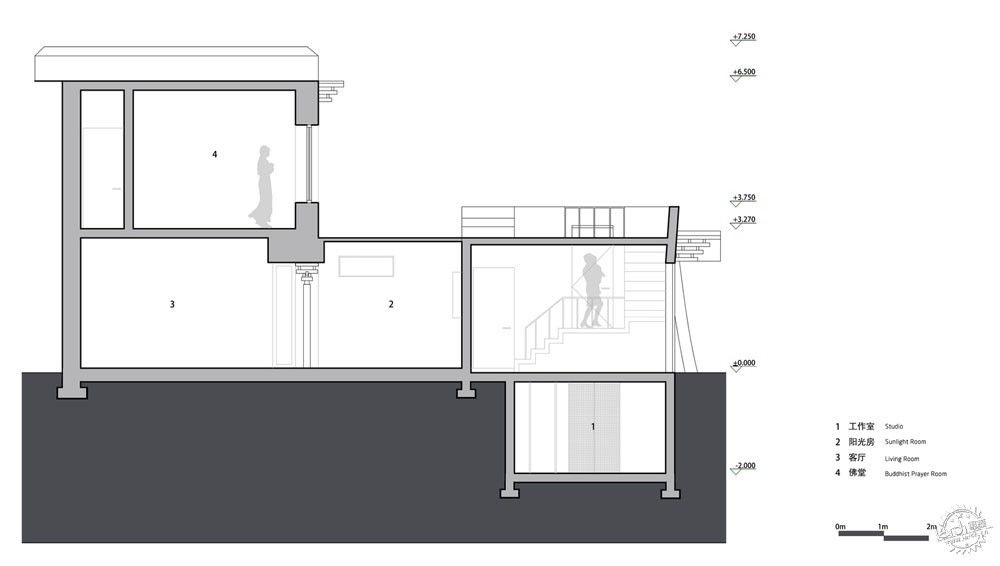
建筑设计:hyperSity architects
地点:中国拉萨
类型:改造建筑
主创建筑师:史洋,黎少君
设计团队:吕阳,藤路,康家旗
面积:320.0 ㎡
项目时间:2018年
Architects: hyperSity architects
Location: Lhasa, China
Category: Renovation
Principal Architect: Yang Shi, Shaojun Li
Design Team: Yang Lv, Lu Teng, Jiaqi Kang
Area: 320.0 ㎡
Project Year: 2018
|
|
